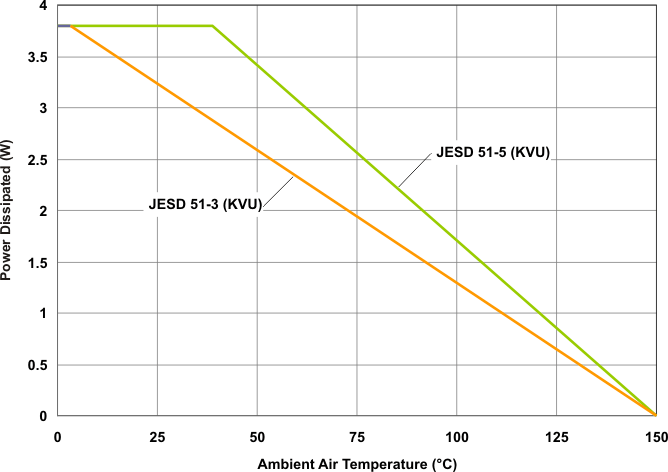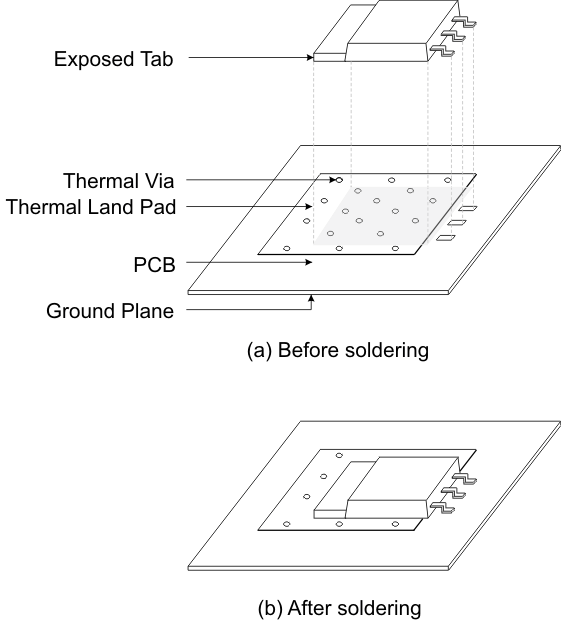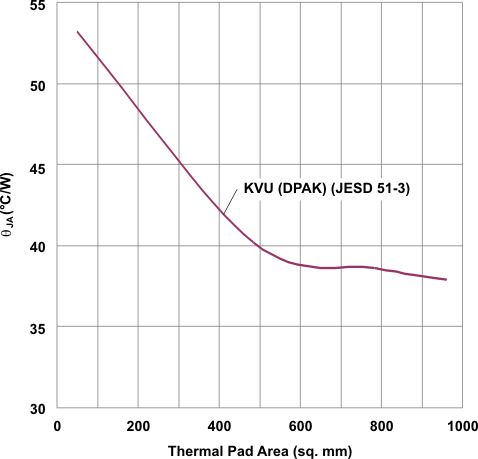ZHCSI97F May 2010 – March 2020 TPS7A65-Q1
PRODUCTION DATA.
10.1.1 Power Dissipation and Thermal Considerations
Calculate the power dissipated in the device using Equation 1.
where
- PD = continuous power dissipation
- IOUT = output current
- VIN = input voltage
- VOUT = output voltage
- IQUIESCENT = quiescent current.
IQUIESCENT << IOUT; therefore, ignore the term IQUIESCENT × VIN in Equation 1.
For a device under operation at a given ambient air temperature (TA), calculate the junction temperature (TJ) using Equation 2.
where
- θJA = junction-to-ambient air thermal impedance.
Calculate the rise in junction temperature due to power dissipation using Equation 3.
For a given maximum junction temperature (TJ-Max), calculate the maximum ambient air temperature (TA-Max) at which the device can operate using Equation 4.
Example
If IOUT = 100 mA, VOUT = 5 V, VIN = 14 V, IQUIESCENT = 250 µA and θJA= 30˚C/W, the continuous power dissipated in the device is 0.9 W. The rise in junction temperature due to power dissipation is 27˚C. For a maximum junction temperature of 150˚C, maximum ambient air temperature at which the device can operate is 123˚C.
For adequate heat dissipation, TI recommends soldering the power pad (exposed heat sink) to the thermal land pad on the PCB. Doing this provides a heat conduction path from the die to the PCB and reduces overall package thermal resistance. Figure 22 shows power derating curves for the TPS7A65-Q1 family of devices in the KVU (DPAK) package.
 Figure 22. Power Derating Curves
Figure 22. Power Derating Curves For optimum thermal performance, TI recommends using a high-K PCB with thermal vias between the ground plane and solder pad or thermal land pad. Figure 23 (a) and (b) show this. Further, a design can improve the heat-spreading capabilities of a PCB considerably by using a thicker ground plane and a thermal land pad with a larger surface area.
 Figure 23. Using a Multilayer PCB and Thermal Vias for Adequate Heat Dissipation
Figure 23. Using a Multilayer PCB and Thermal Vias for Adequate Heat Dissipation Keeping other factors constant, the surface area of the thermal land pad contributes to heat dissipation only to a certain extent. Figure 24 shows the variation of θJA with surface area of the thermal land pad (soldered to the exposed pad) for the KVU package.
 Figure 24. θJA vs Thermal Pad Area
Figure 24. θJA vs Thermal Pad Area